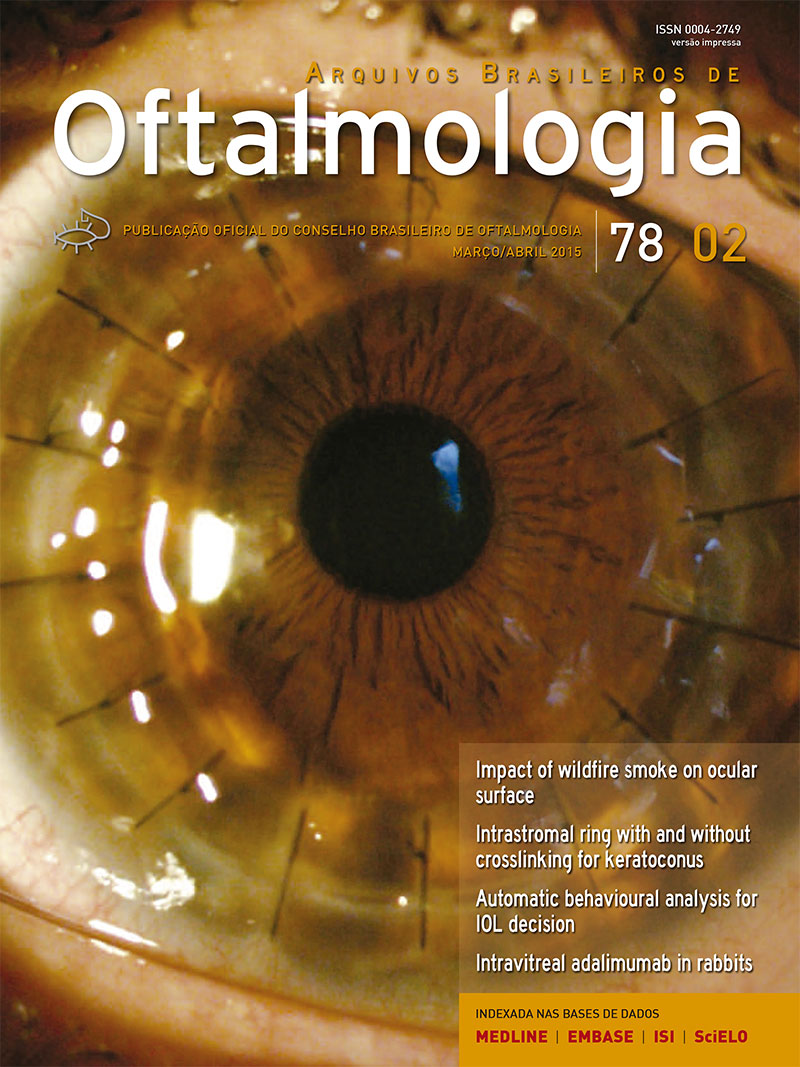Purpose: This study aimed to evaluate the association of age-related macular degeneration (AMD) with apolipoprotein E (APOE) variants and serum lipid profiles, including levels and fractions of total serum cholesterol (TC), low-density lipoprotein cholesterol (LDLc), and high-density lipoprotein cholesterol (HDLc), and triglycerides (TG). Methods: Genotyping of APOE-HhaI was performed in 134 patients (study group, SG) and 164 individuals without AMD (control group, CG), aged 50-89 years. Lipid profiles were analyzed in a subgroup of 30 subjects of both groups, matched according to age and sex. The significance level was set at P<0.05. Results: APOE E3/E3 was more prevalent (SG=74.6%; CG=77.4%), with no difference between both groups (P=0.667). The same result was observed for risk genotypes (APOE E -/2: SG=7.4%; CG=10.3%, P=0.624). Serum levels of TC, LDLc, and TG revealed similar median values between SG (193.5, 116, and 155 mg/dL, respectively) and CG (207.5, 120, and 123.5 mg/dL, respectively; P >0.05). For HDLc, a higher median value was observed in SG (53.3 mg/dL) versus CG (42.5 mg/dL; P=0.016). Logistic regression analysis showed the same value, and the HDLc/TC ratio was -11.423 (P=0.014), as also confirmed by an increase in HDLc in SG. The association between lipid profiles and apolipoprotein E genotypes was similar in both groups (P>0.05). Conclusion: APOE-HhaI is not associated with AMD. However, an increase in serum HDLc level appears to exert a protective effect against the disease, irrespective of the genetic variants of apoE.
Keywords: Polymorphism; genetic; Apolipoprotein E; Triglycerides; Lipids; Cholesterol; Macular degeneration; Cholesterol, HDL; LDL-receptor related proteins
